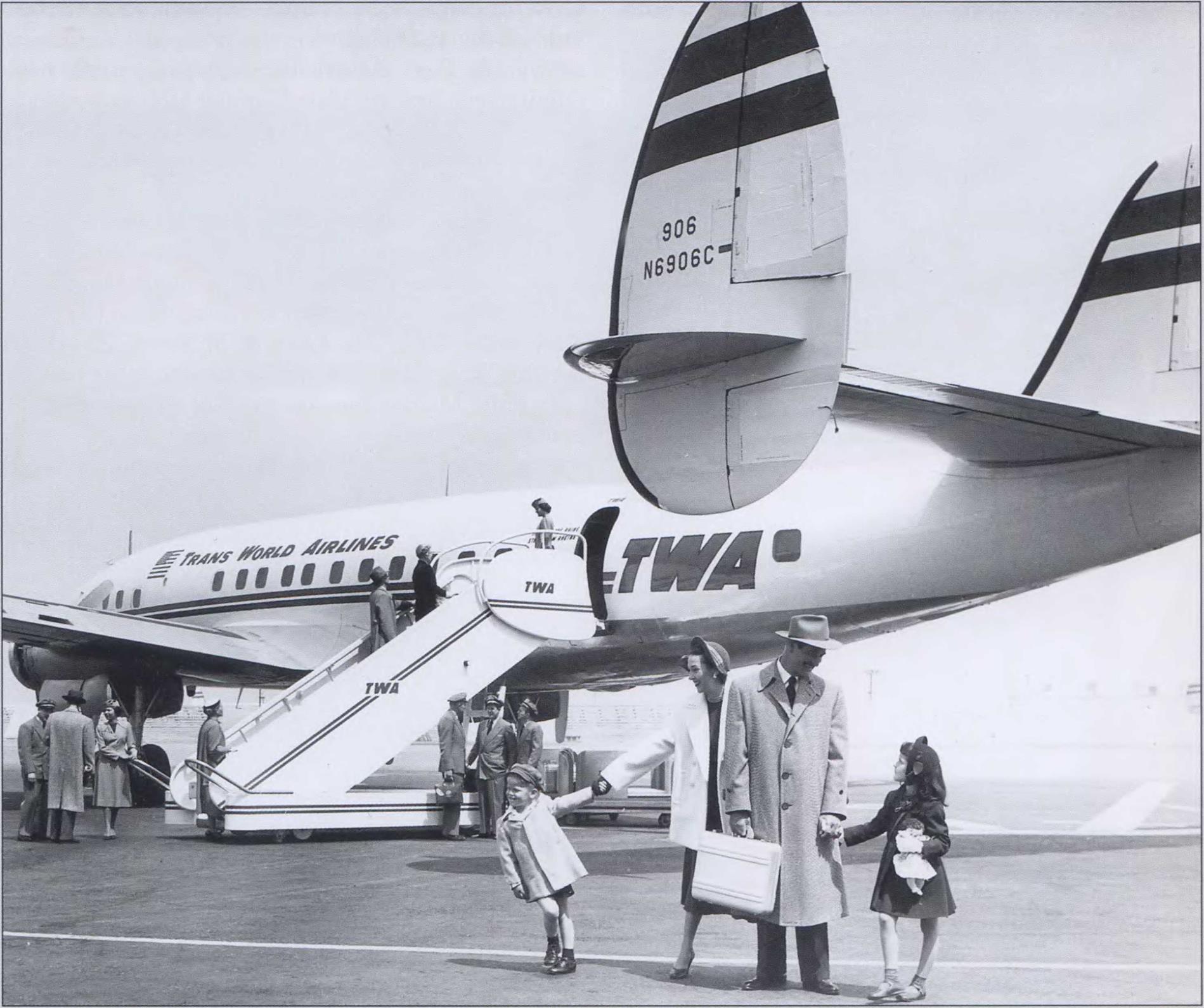NONSTOP AT LAST!
|
|
R |
eliable coast-to-coast nonstop flights could, theoretically, have begun with the introduction of DC-4s and Constellations following the end of World War II. In fact, TWA operated one “scheduled” Los Angeles to New York nonstop on February 3, 1948, when a fierce winter storm covered the Midwest. Flight 12’s regular Kansas City and Chicago stops were canceled and the Model 049 Connie covered the 2,470-mile flight in 6 hours 55 minutes.
While air travel began its rapid growth during this time period, the number of transcontinental tickets probably did not justify such flights. Although the market was sufficient by the early 1950s, and aircraft could stretch their legs across the country nonstop, they did not. Why?
In his book, Howard Hughes and TWA, Robert W. Rummel wrote that the airline’s traffic managers argued against the longer flights, based on their
belief that passengers wanted an en-route stop to get out and stretch their legs, and that no one wanted to fly nonstop across North America for up to nine hours. Perhaps a more important reason was that pilot contracts and U. S. federal air regulations prohibited flights of more than eight hours without an augmented crew, which would also result in additional costs to the airline. TWA operated its transatlantic flights this way as a matter of expediency, but not on long domestic routes where crew changes could be easily carried out.
When American Airlines announced plans to begin coast-to-coast nonstop service with its new DC-7s, TWA quickly inaugurated its own nonstop service and upstaged the competition. On October 19,1953, “Ambassador” Flight 2, an overnight service from Los Angeles to New York-Idlewild, operated with the Model 1049 Super Constellation, which could barely cover the distance in less than eight hours; it was scheduled for 7 hours 55 minutes. Prevailing winds would not permit a westbound flight within the time constraint, so a 15-minute stop was made at Chicago for a crew change with no local traffic allowed!
Not to be upstaged, American Airlines quickly retaliated with DC-7 “Nonstop Mercury” flights in both directions, on November 29. Although the Douglas was faster than the Super Connie, and flew an eastbound 7-hour 15-minute schedule, it could not
reliably operate its under-eight-hour westbound time frame, a fact quickly pointed out by American’s pilot union but quietly ignored by federal officials. More than a dozen modifications were carried out in an effort to squeeze extra speed from the DC-7’s R-3350 engines, but this was not enough to resolve the dilemma.
Then, early in 1954, government restrictions were lifted to make transcontinental nonstops in excess of eight hours “legal,” and American revised its westbound schedule to 8 hours 15 minutes. While TWA and its pilots reached agreement on overtime for duty in excess of eight hours and began nonstops in both directions, American and its crews deadlocked over the work rules. The entire pilot workforce walked out on July 31, 1954.
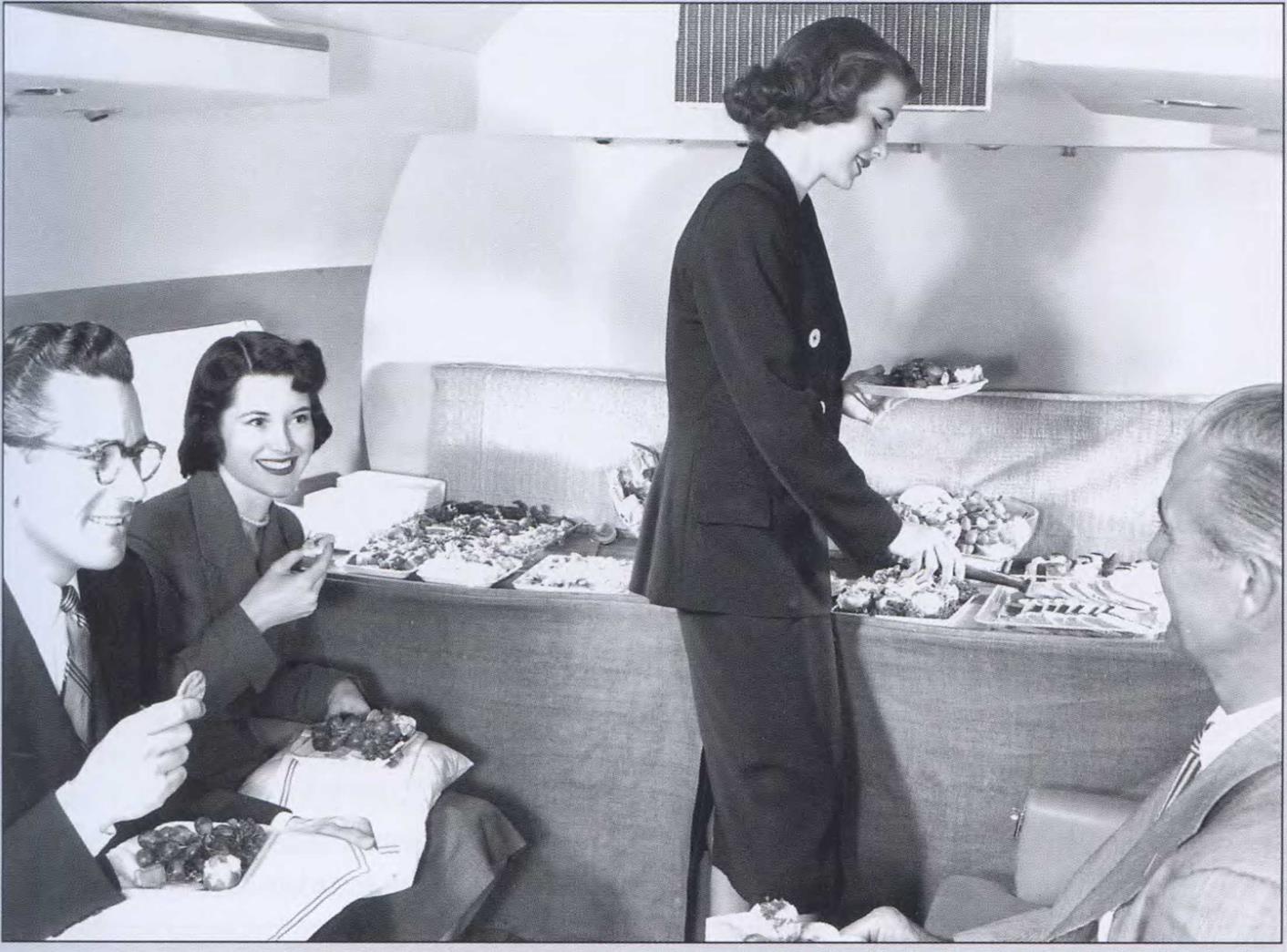
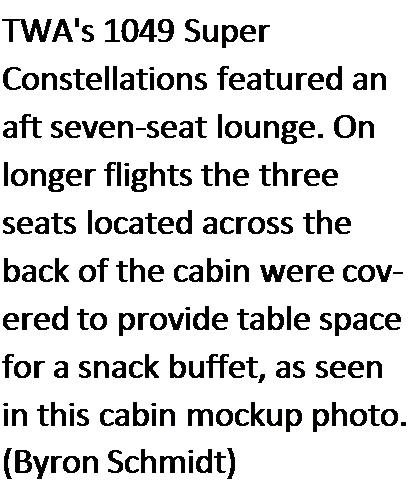 |
The company’s legendary president, C. R. Smith, on military leave at the time, returned infuriated about the work stoppage. He quickly reached an agreement with the pilots that called for extra pay on flights —on DC-7s only—exceeding eight hours, ending a 24-day strike. TWA retained a bit of an advantage with eight sleeping berths available on its Super Connies, unlike the DC-7’s standard “day plane” configurations, but both carriers offered lounges and lavish meal service. United Air Lines, which received its first DC-7s six months behind American Airlines, launched nonstops from San Francisco to New York —again eastbound only —on June 1, 1954; westbound flights began nearly a year later.
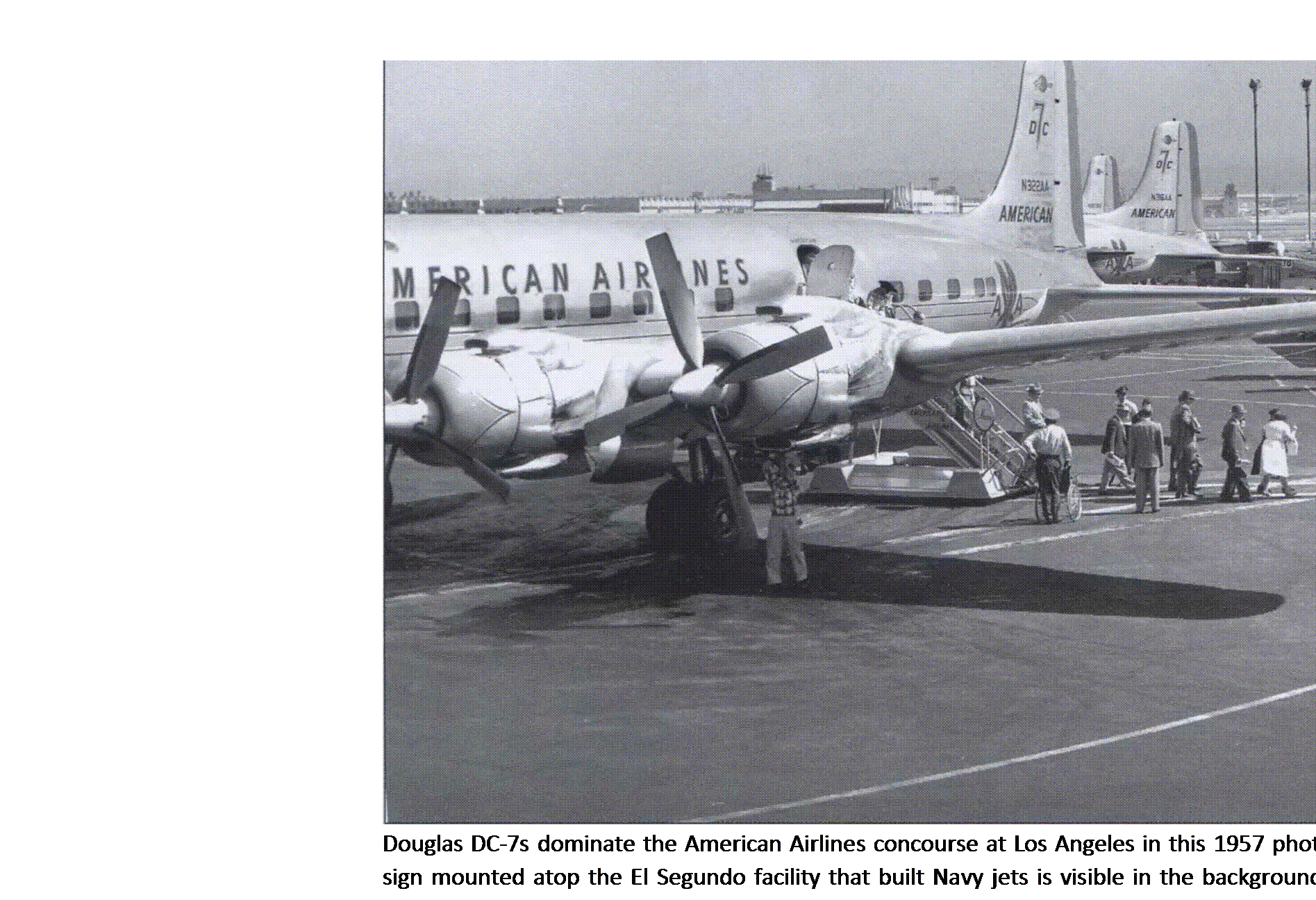 |
San Francisco and Honolulu. Its furnishings included provisions for 28 upper – and lower-bunk berths. In a day configuration, the airplane could accommodate up to 103 passengers, and featured a unique 14-passenger lounge located below the main cabin. Only 56 Stratocruisers were built, for Pan Am (21, including the prototype), Northwest (10), American Overseas (8), BOAC (10), and United (7). Northwest was the last of the original customers to withdraw the type, on September 15, 1960.
Unlike surplus DC-3s and DC-4s, used Stratocruisers were difficult to place with second-tier operators. Knowing this, the type’s original owners traded them in to aircraft manufacturers as down payments on jet equipment. Transocean Air Lines, then the largest non-scheduled airline, bought 14 Stratocruisers that Boeing acquired in this fashion. Barely two years later, the airline went bankrupt and its Strats were sold
at auction with only four in flyable condition. A few other short-lived attempts were made to utilize secondhand examples, but did not succeed.
The only long-term success realized with secondhand Stratocruisers came in the form of Aero Spacelines’ radical modification to the airframe that resulted in the “Pregnant Guppy,” with an enlarged fuselage capable of ferrying oversize cargo. On the military side, the Israeli Air Force picked up five ex-Pan Am 377s for use as freighters, two of which were converted to swing-tail configurations.
Although Boeing could not claim great success from its civil Stratocruiser version, it prospered from the construction of 888 C-97/KC-97 military variants. But Stratocruiser production was important in allowing the manufacturer to keep its hand in the civilian airliner market, which it would begin dominating in the 1960s, with its revolutionary turbojet 707 series.
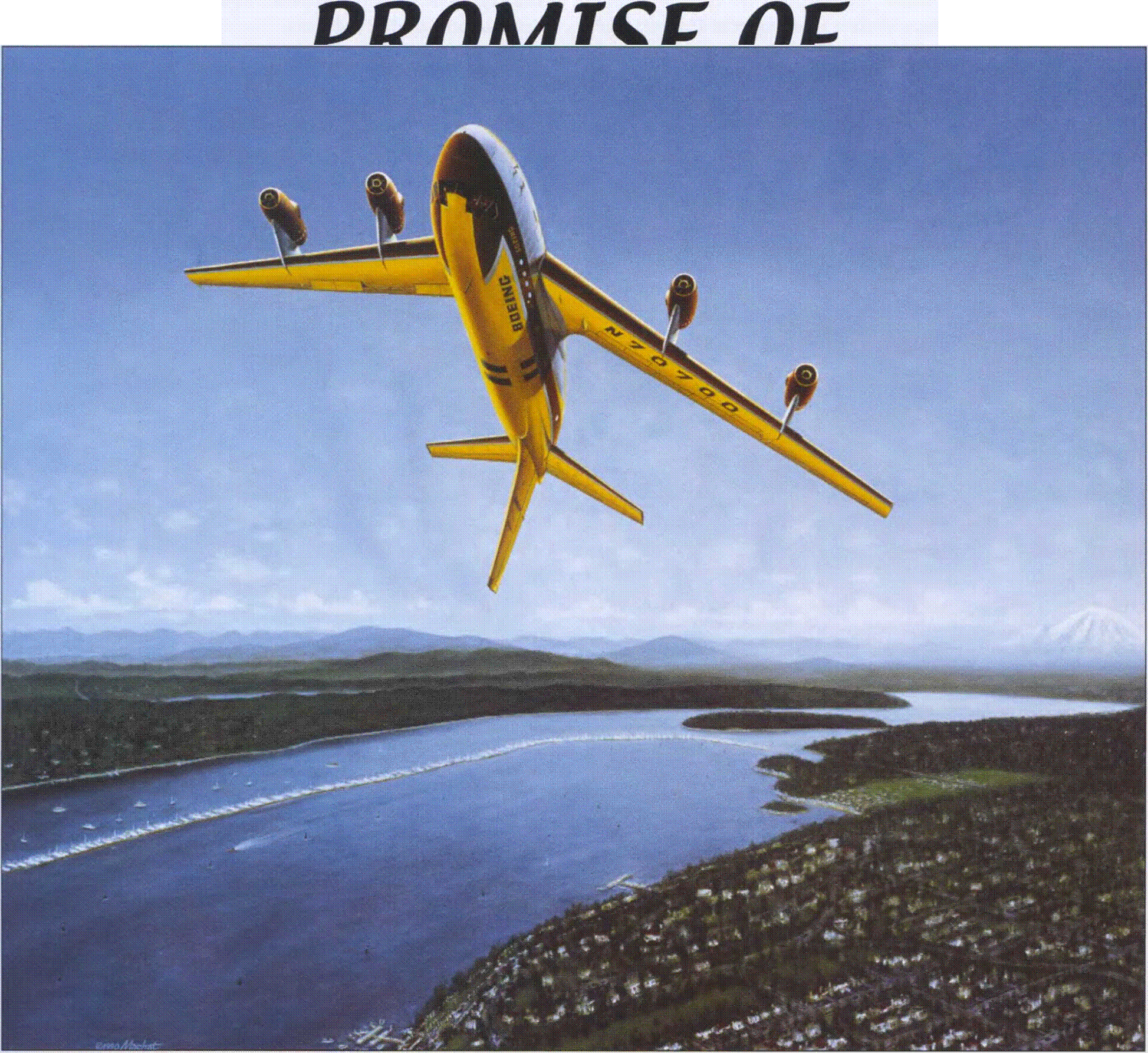 |
Boeing, primarily a builder of bombers and transports, designs a brand-new prototype that will change the heady game of airliner manufacturing forever. Developed to become a high-speed tanker for the Air Forces emerg
ing fleet of new jet aircraft, this four-engine transport becomes an obvious candidate for airline service as well. The public begins to embrace the concept of air travel by jet, and the revolutionary Boeing 707 is born.











